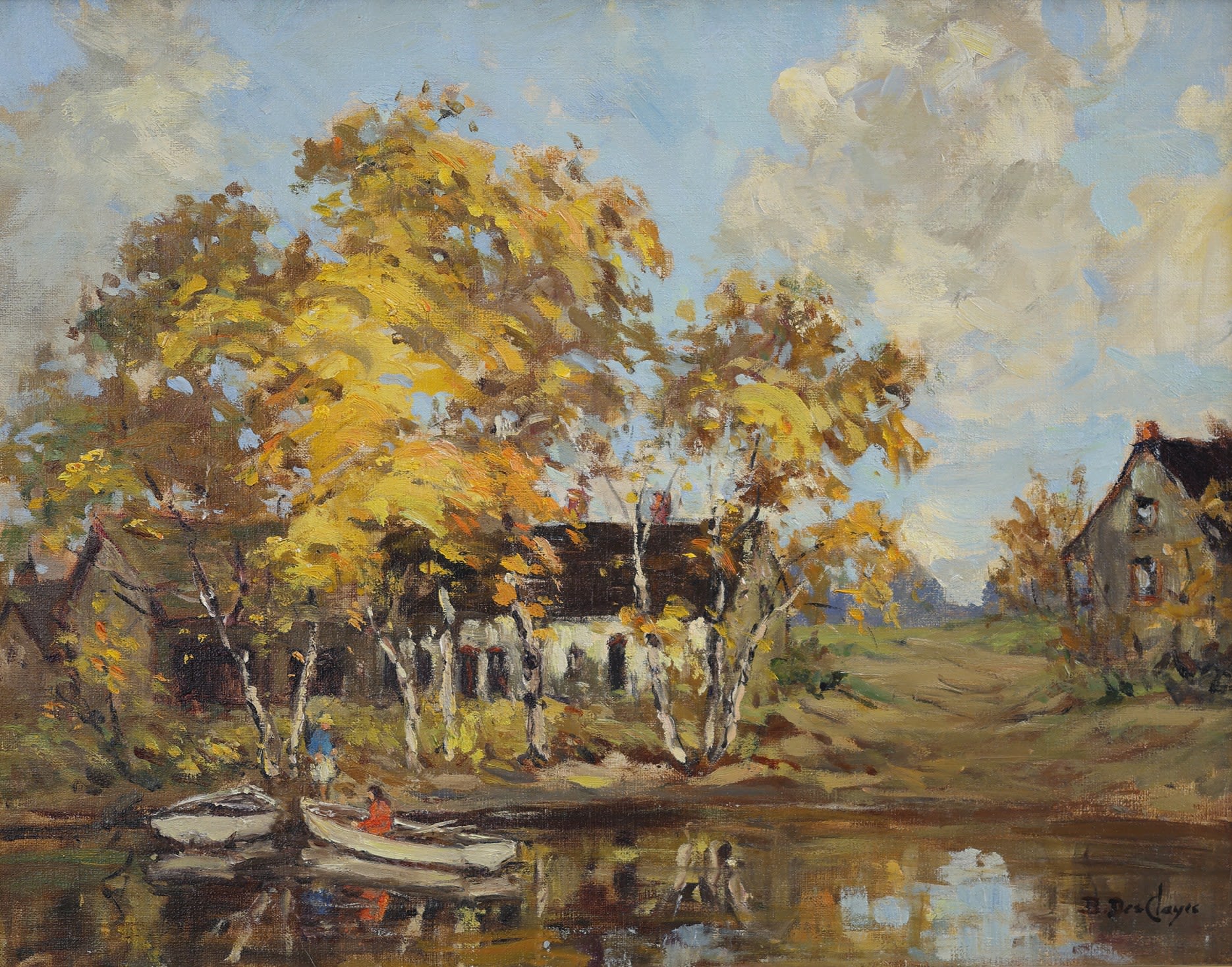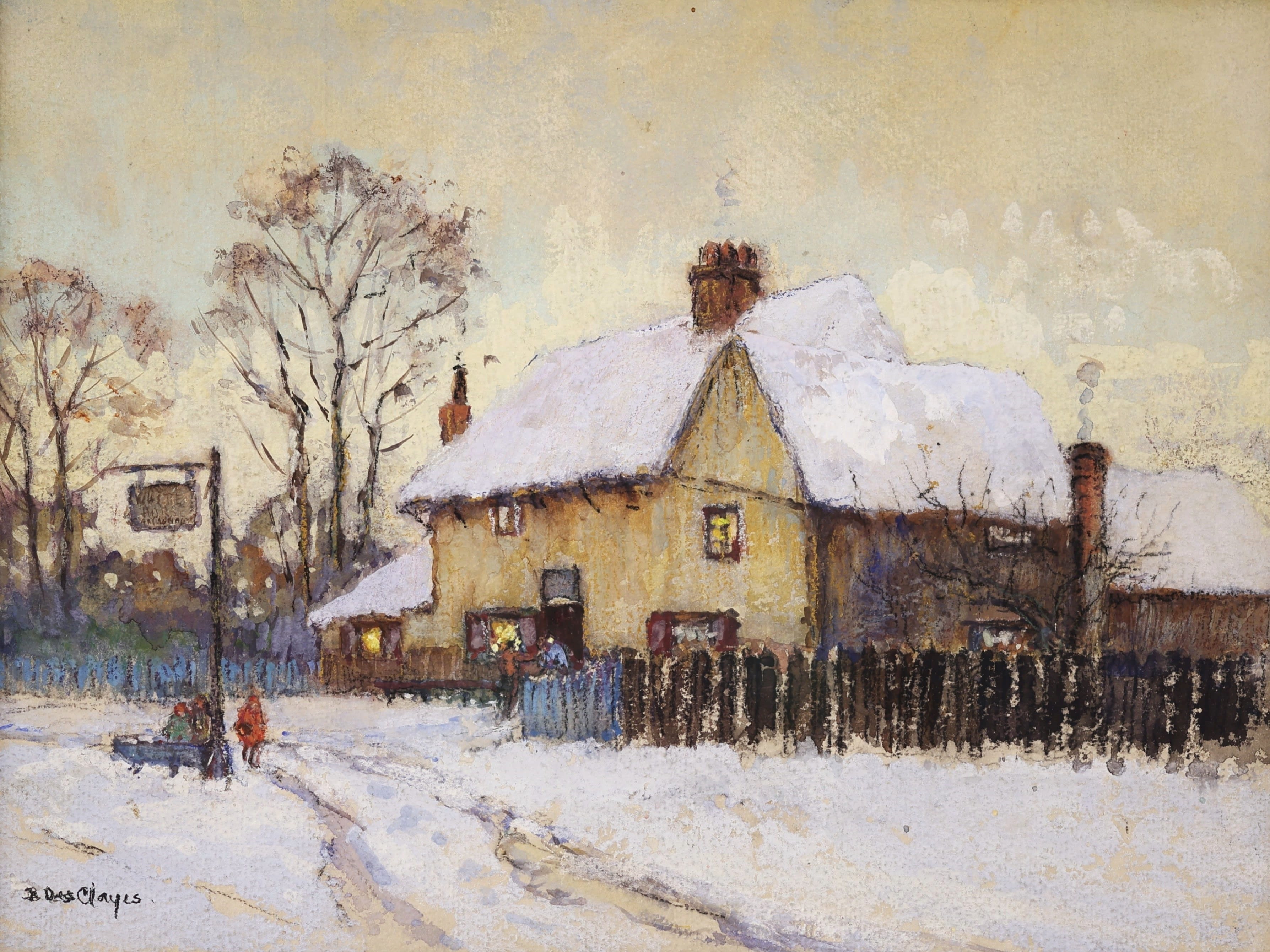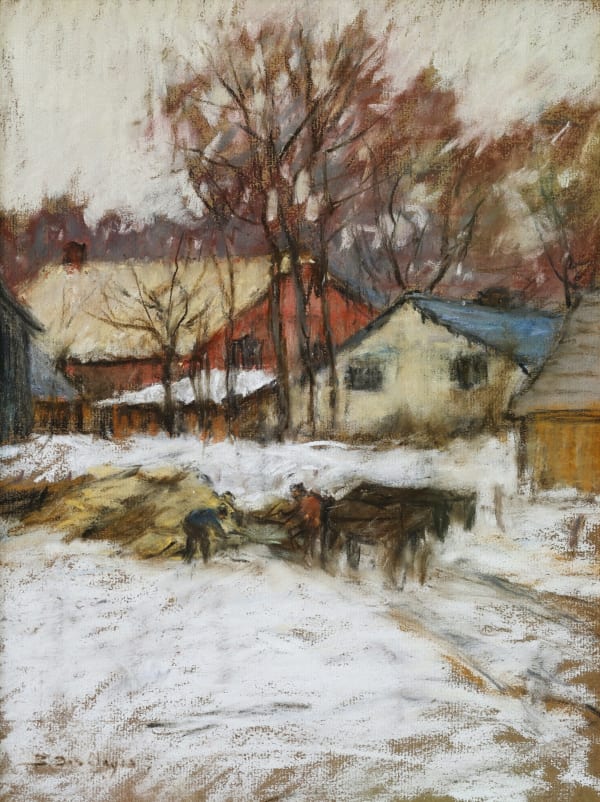Des Clayes’ “fondness for the Canadian landscape pushed her to illustrate two books: ‘Here and There in Montreal and the Island of Montreal’ by Charles W. Stokes, and ‘Acadia (Nova Scotia)’ published by the Dominion Atlantic Railway.”
Canadian Women’s Artists History Initiative
Berthe Des Clayes was born in Aberdeen, Scotland, in 1877. She received her initial art training at the Bushey School of Art in London, where she studied under Hubert von Herkomer. Continuing her studies, she attended the Académie Julian in Paris, learning from renowned instructors Tony Robert-Fleury and Jules Lefebvre.

Berthe Des Clayes; Off to Town
Berthe lived and worked in various locations including Scotland, England, France, and Canada. She resided in Montreal, Quebec from 1912 to 1919, and again from 1931 until 1951, punctuating her time abroad with a residence in Lunenburg, Nova Scotia during 1922.

Berthe Des Clayes; Frozen
Des Clayes was deeply involved in the Montreal art community, notably serving as the first female vice-president of the Art Association of Montreal (now the Montreal Museum of Fine Arts) in 1920. She was an impressionistic painter, known for her skillful use of oil, watercolours, pastels, and chalk to capture evocative portraits and rural landscapes. Her artwork, which includes landscapes and harbour scenes of Nova Scotia, can be found in prestigious collections like the Musée national des beaux-arts du Québec, the National Gallery of Canada, the Art Gallery of Ontario, and others. She exhibited her work extensively, including at the Canadian National Exhibition and the Royal Canadian Academy of Arts from 1912 to 1947.

Berthe Des Clayes; Silver Birches by the River
In her illustrious career, Berthe won the Jessie Dow Prize twice and illustrated two notable books: “Here and There in Montreal and the Island of Montreal” by Charles W. Stokes, and “Acadia (Nova Scotia)” published by the Dominion Atlantic Railway. The fondness she had for the Canadian landscape is evident in her illustrative works and paintings.

Berthe Des Clayes; The White Horse, Chorleywood
After World War I, she travelled extensively between England and France, and by 1920, she relocated to Chorleywood in England. Returning to Montreal in 1931, she set up a studio in Beaver Hall Square, a vibrant artist’s enclave, before moving back to England in 1967. Berthe Des Clayes passed away in Devon, England, in 1968. Her legacy continues to be celebrated, as demonstrated by a major exhibition of her work at the Musée national des beaux-arts du Québec in 2015. Her sisters Alice and Gertrude, also artists, frequently exhibited with her, enriching Canada's cultural heritage.
Berthe Des Clayes remains a significant figure in Canadian art, bridging European and Canadian artistic traditions and contributing richly to the cultural tapestry of each place she called home.






